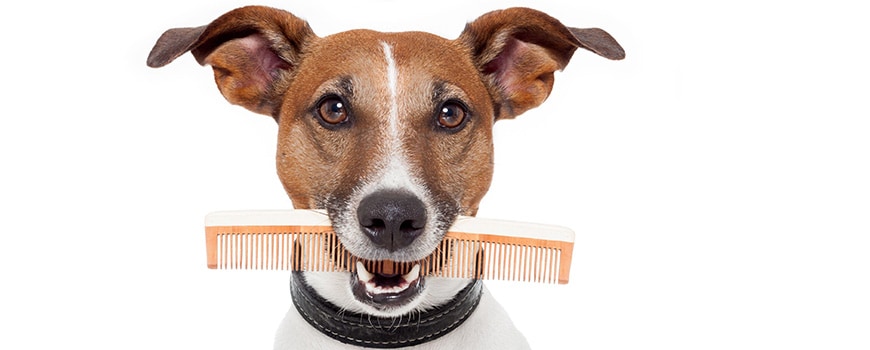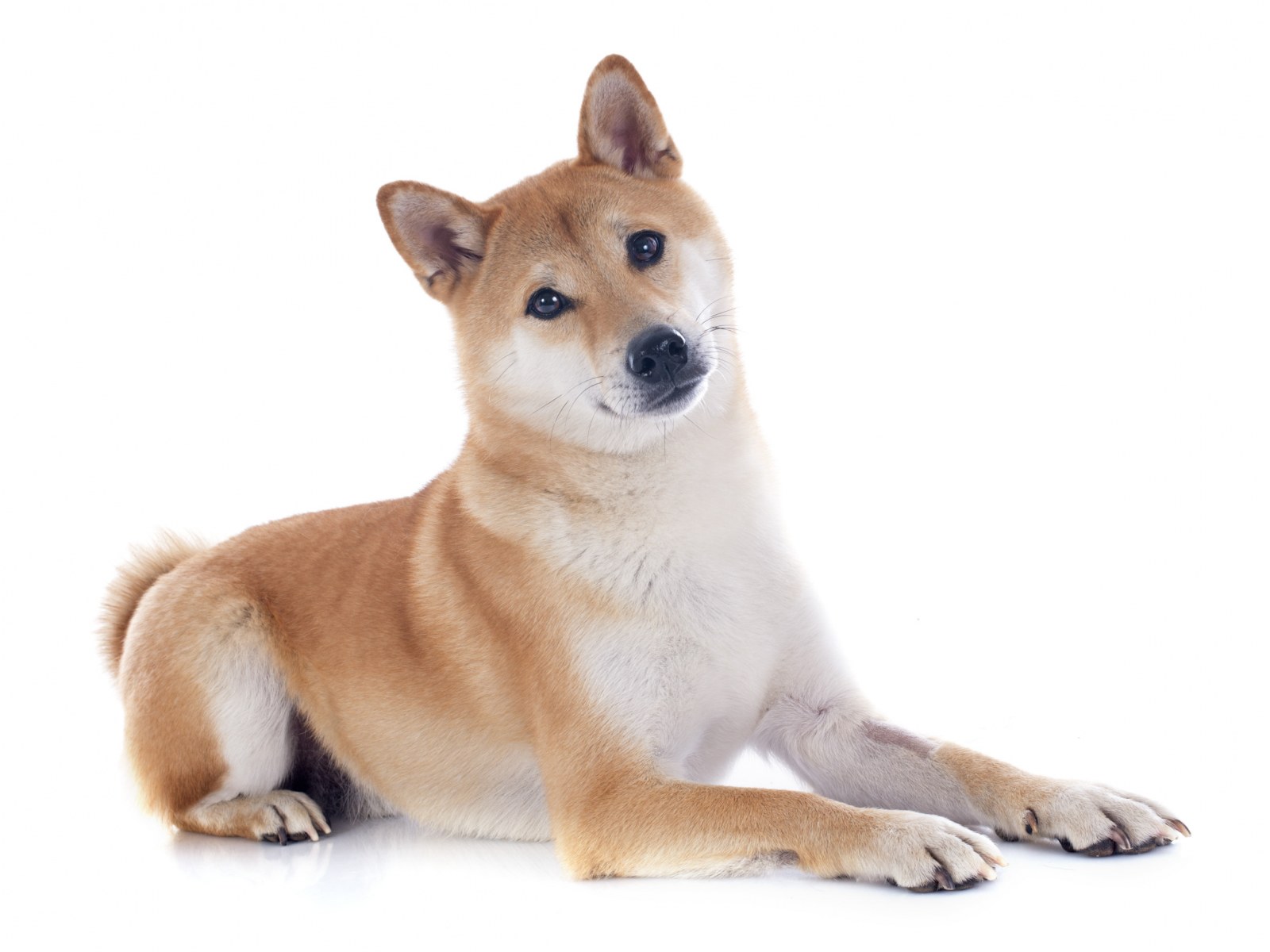There are two options for stripping and plucking the coat. You can either perform a full strip, which involves straight removal of the entire dead top coat, or you can “roll” the coat. The former, as the name suggests, extracts all of the coat that is ready for removal, leaving just the undercoat and any new topcoat hairs.
The latter involves a monthly treatment, removing just a portion of the hair. The decision depends on whether the dog is being groomed for the show ring or for the pet home.
Full Strip
Face the dog away from you, and check the coat for readiness by gently pulling or stripping a few strands. Check that you have taken the complete hair, including the root or bulb. If the coat is ready, start on the top of the head, leaving the eyebrows.
Take a few hairs at a time and work a small area at a time, making sure to remove all the long hairs before moving to an adjoining area. Work across the top of the skull in rows from ear to ear. When the top of the head is completed, remove the hair from the sides of the face, leaving the desired facial furnishing, such as a beard.
Work down from beneath the jaw to about the point of the breast bone. Remove any undesired hair from the pinna. To do this, hold the pinna in one hand and gently pluck or strip with the other. Do not do either without holding the pinna because you can bruise the skin. Then work down the back of the neck in rows towards the shoulders.
Continue working across the dog in rows from left to right (or right to left if you are left-handed). This results in neat work and you should be able to follow your previous line easily. Continue along the body to the tail. Where you go from here depends on the breed of dog you are styling.
The important point to remember is that you must remain methodical. If you start to randomly pull out bits of coat without following your previous lines, you will soon lose your way and leave hair behind. This not only looks unsightly, but the coat will not grow back evenly and the next visit to the groomer will prove to be a nightmare as some coat will be ready to come away (the bits that you left behind) and the rest will not (because it has not been left long enough).
Rolling
Rolling a coat is something that is done purely for the purpose of dog showing. Show dogs are very valuable and most handlers prepare their own dogs.
It involves a constant stripping of dead hairs to keep the coat in year-round show condition and is achieved by a continuous three-monthly grooming cycle that requires a portion of the coat to be removed each month. It takes a complete four-month cycle before the coat is settled into a routine and the task becomes straightforward.
The easiest way to remove a random number or proportion of the coat is to take a portion of skin and hold it in your fingers to make a “tent”. The hairs then stand away from the skin and you can remove as many as you wish.
At the beginning the dog has a full, untouched coat. Let’s say that the topcoat is 5 cm in length and we want to reduce it to 2-3 cm.
Month 1: make your tent and start by taking the longest hairs to remove about a third of the topcoat hairs within your hand. Continue over the area you wish to strip. You will be left with the undercoat and the rest of the original coat in place.
Month 2: use the same technique and remove about half of the remaining longest hairs. You will be left with the undercoat and two different lengths of topcoat. Some hairs will be the regrowth of the hair removed in month 1 (which will be about 1cm in length), the rest are from the original topcoat, still at 5cm.
Month 3: remove the last of the longest hairs. The undercoat is still intact and you will still have two different lengths of topcoat. The replaced hair from month 1 will be approximately 2cm in length, and the replaced hair from month 2 will be about 1 cm long, approximately the same length as the undercoat.
Month 4: the undercoat is still intact unless it is in catagen. The replaced hair from month 1 is now 3 cm long, the replaced hair from month 2 is 2 cm long and the replaced hair from month 3 is about 1 cm long. The long hairs from month 1 are now ready to come out again. If you continue the process, the styled coat will be maintained at 2-3 cms in length.
The undercoat will partially molt out and replace itself according to the seasons, but the topcoat will be made up of two different lengths.This allows it to sit flat on the body and leaves the dog with a topcoat.
Depending on the breed and the desired coat length, this method can be spread over a three-, four- or five-month cycle. Over five months the same effect is achieved but less hair is removed at each month’s grooming, leaving the hair to grow slightly longer before it is removed.
Caution
Monitor the skin throughout the stripping and plucking routine. Remember that the coat should only be removed by this method if it is ready to be removed. This means that each hair has completed its life cycle and is only being held within the follicle by friction.
Dead hairs can be plucked without pulling the skin away from the body. If the skin is being pulled, the styling session should be abandoned and the coat re-checked for suitability after a couple of weeks.
If there are signs of inflammation, stop immediately and rest the skin. When performing this styling technique for the first time on any dog, it is advisable to check the skin for the following few days as there can sometimes be a delayed response to the pulling.
Distilled witch hazel (Hamamelis water) has a general sales license, is safe for use on animals, is available over the counter at most chemists and is a good astringent to help with mild irritation of the skin after plucking. It should not, however, be used if the skin has broken into open sores.


